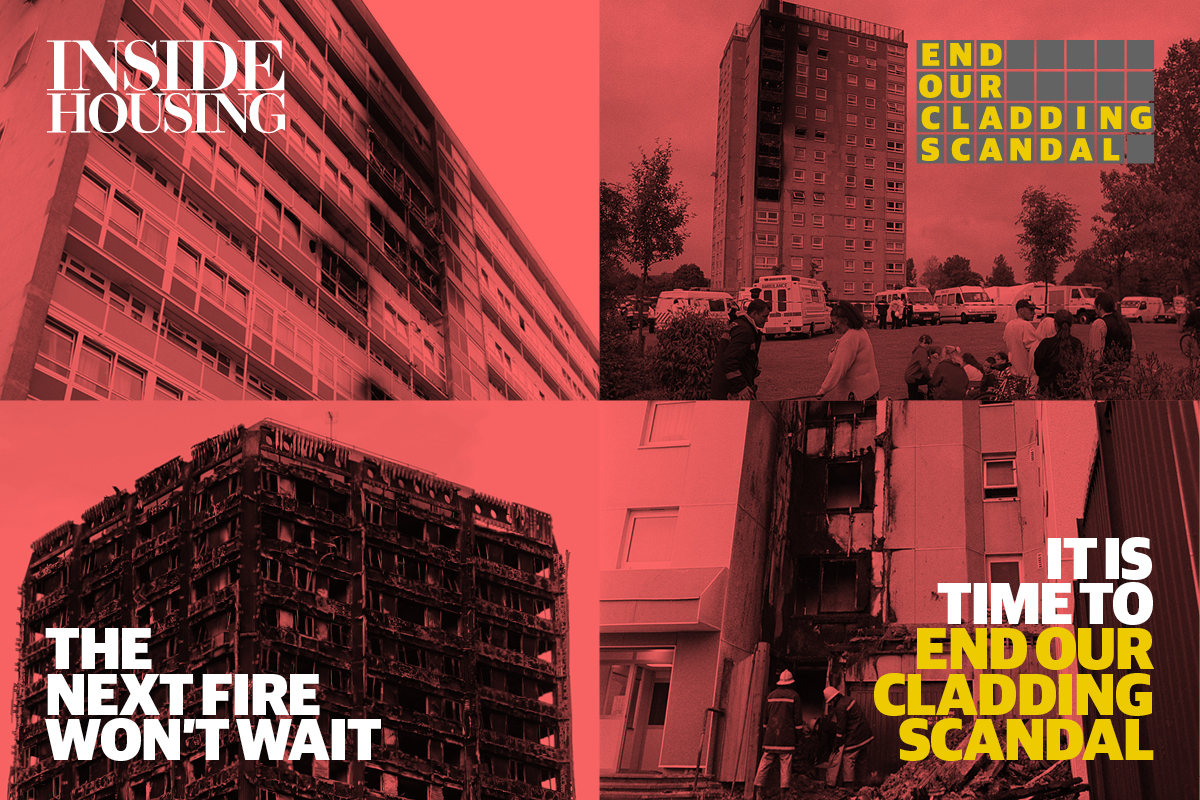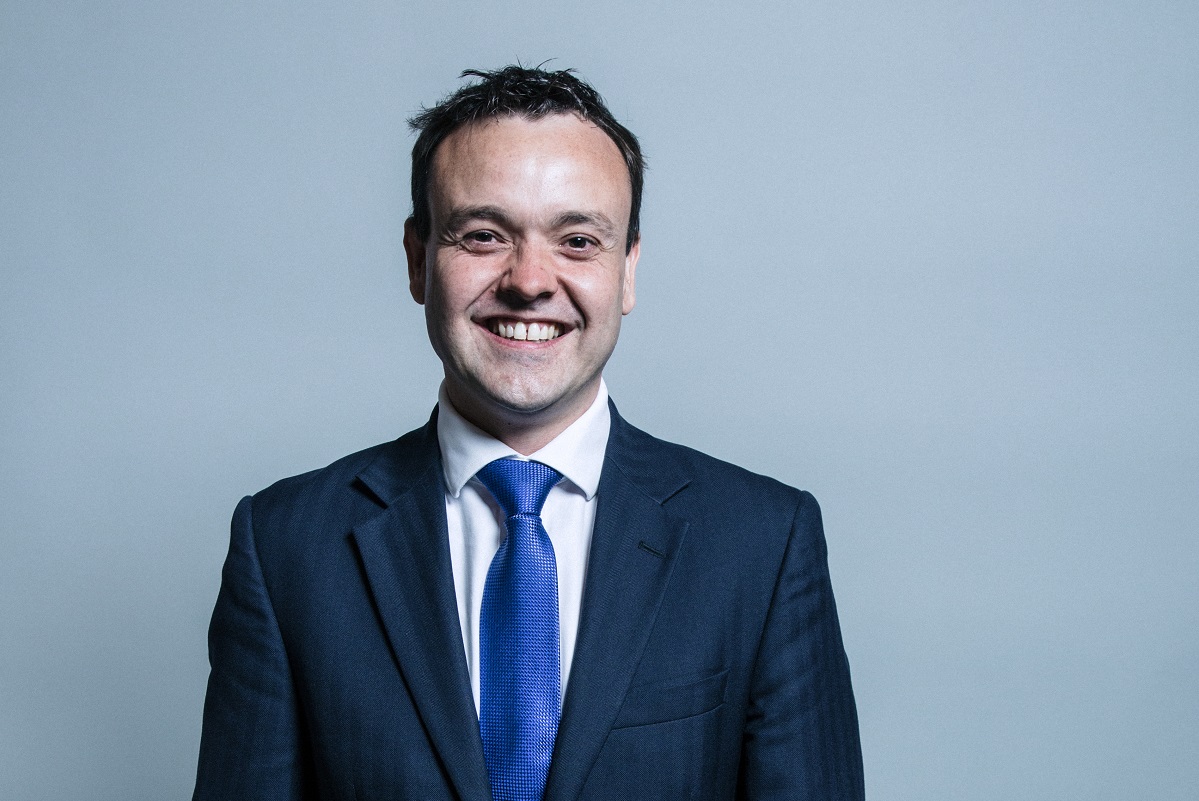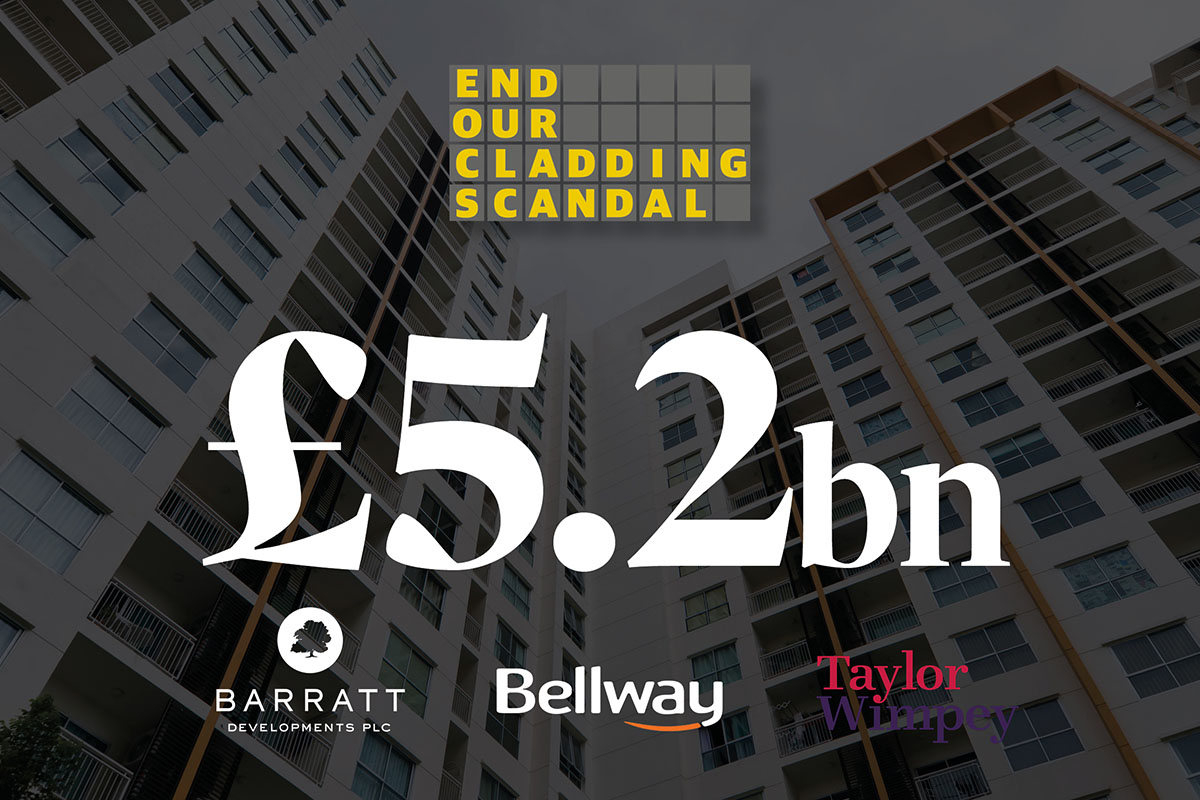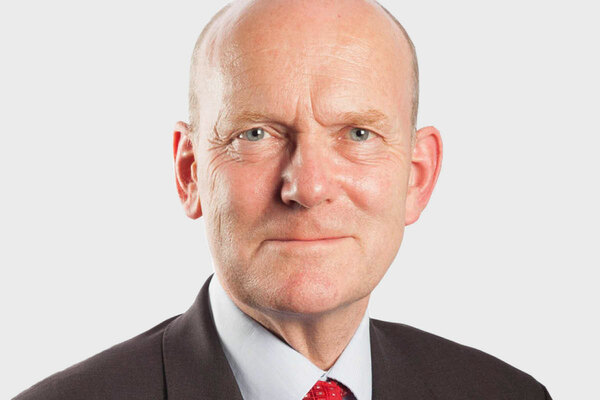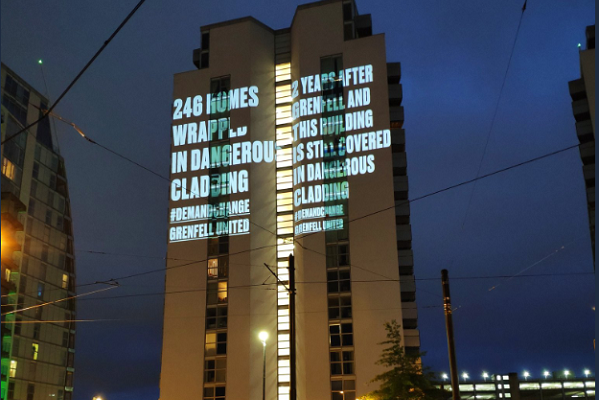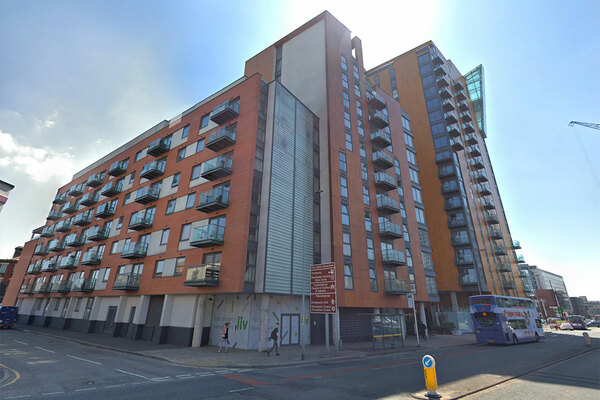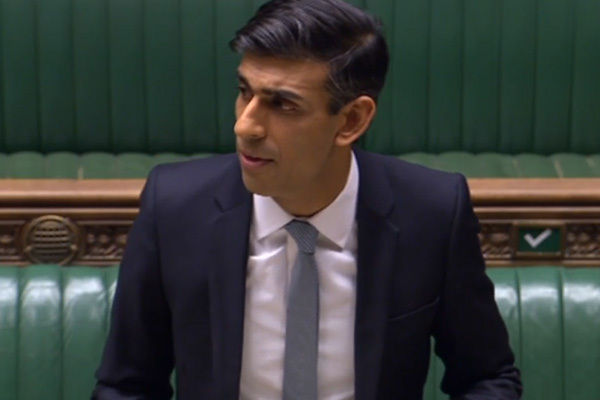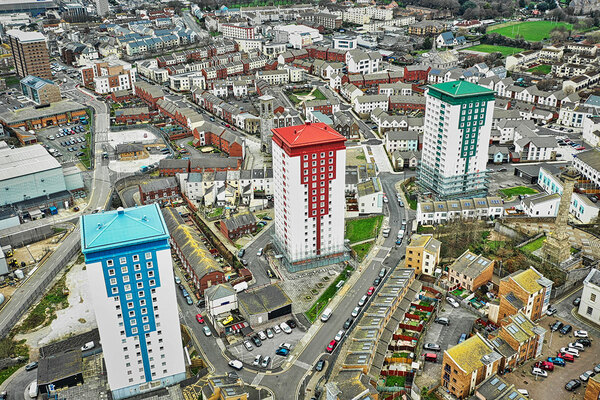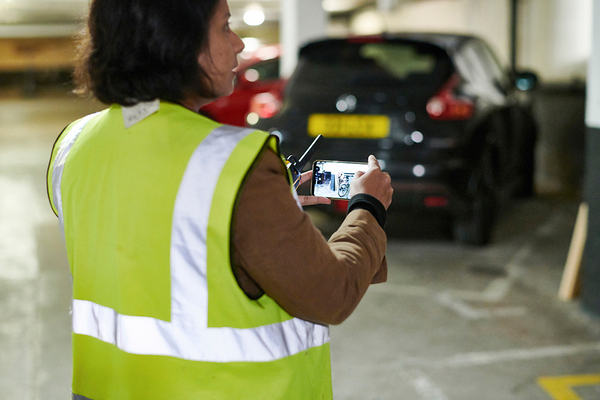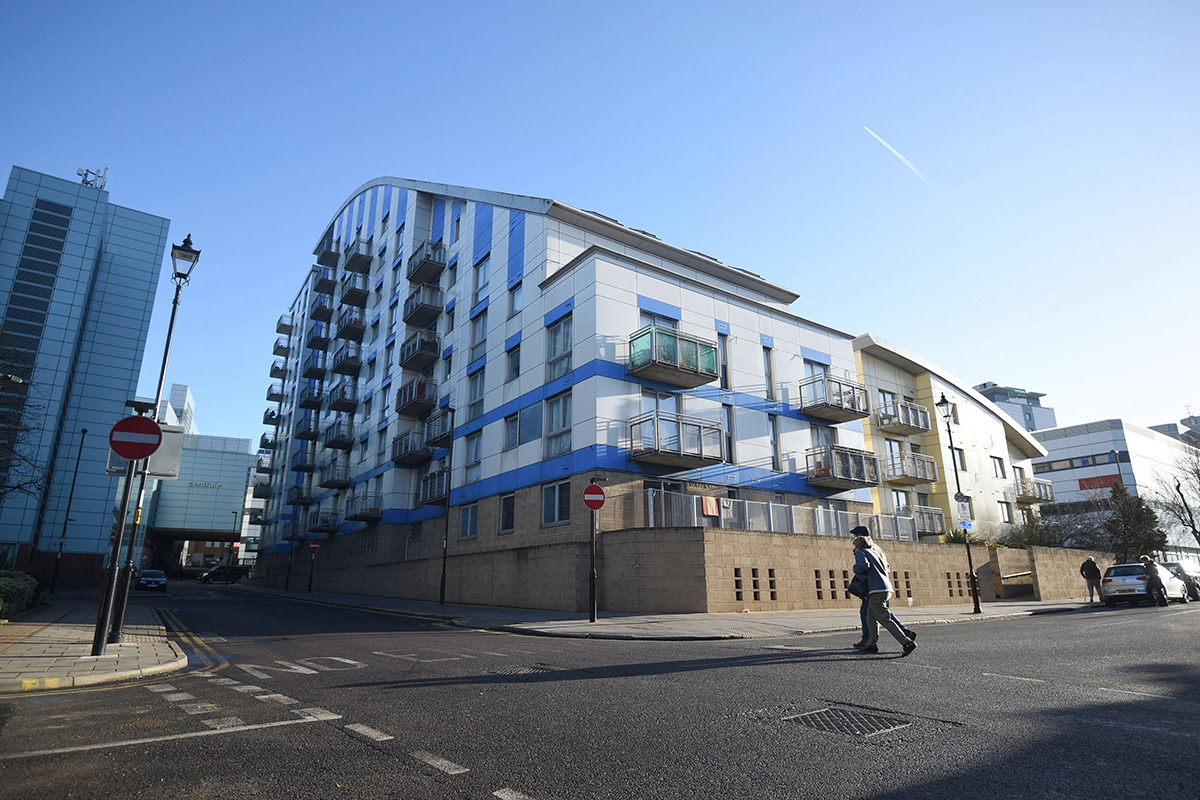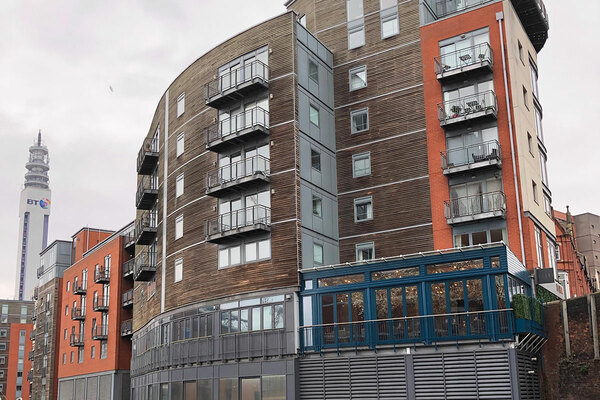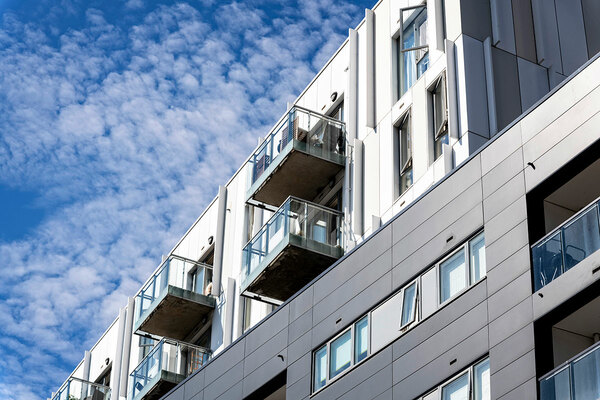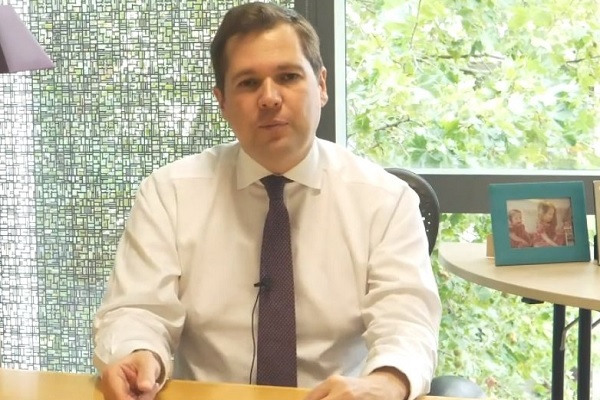The next fire won’t wait. Here are the 10 steps to End Our Cladding Scandal
Inside Housing has joined with residents of buildings with dangerous cladding to call for the government to lead an “urgent, national effort” to end the scandal that has left tens of thousands of buildings nationwide clad in dangerous materials and residents asked to pay.
With tens of thousands of buildings around the country impacted by the cladding crisis, and millions of leaseholders unable to move and facing crippling bills for removal, Inside Housing has relaunched its End Our Cladding Scandal campaign alongside The Sunday Times with a new 10-point plan to solve the crisis for good.
Developed in partnership with leaseholders, Grenfell Tower survivors and lawyers working on the public inquiry the campaign has the support of the National Housing Federation, the Chartered Institute of Housing and politicians from across the political spectrum.
Read more about our aims below:
1. The government must lead an urgent national effort to remove all dangerous cladding from buildings by June 2022, including the prioritisation of blocks most at risk
Since the fire at Grenfell Tower more than three years ago, the government has adopted a ‘hands-off’ approach to the remediation of other buildings with dangerous cladding and insisted that making properties safe is the responsibility of building owners.
But three years on, in the face of slow progress and a mounting number of buildings requiring work, it is time for the government to recognise that only a national effort can solve this problem.
It is not right that buildings with minor defects are remediated before those with seriously dangerous cladding systems and we know enough about the risks now to make judgements about the buildings which pose the most risk.
The government must take the responsibility for finding these towers and making them safe before another disaster strikes.
2. The Building Safety Fund must cover all buildings, regardless of height, and a range of internal and external fire safety defects, not just cladding
The Building Safety Fund announced in March was a welcome step forwards, marking the first time the government acknowledged a need to fund the remediation of buildings clad in products other than the aluminium composite material (ACM) used on Grenfell Tower.
However, it has substantial limitations. It is restricted to buildings over 17.7m in height, meaning around 88,000 buildings between 11m and 18m require remediation work but have no recourse to funding.
The fact that recent fires in Barking, Crewe, Worcester Park and Bolton all occurred in buildings below 18m shows the risk of this approach.
It also fails to offer funding for serious defects, such as missing fire breaks or combustible balconies, leaving leaseholders on the hook for bills reaching into six figures. This is not just about cash, without funding this work simply will not get done.
Buildings where work has already started and leaseholders have taken crippling loans to fund it are also excluded, such as the Skyline building (pictured) in Manchester.
Finally, this fund is enough for between 450 and 600 buildings. A reported 2,957 have registered, meaning many will miss out.
3. The government should provide the money up front and then seek to recover it from any responsible parties or via a temporary levy on development
Fixing this crisis will, inevitably, be expensive. The recent select committee report on which this campaign is based estimated the total cost at close to £15bn.
It is not fair that the full burden for remediating these blocks should fall on the taxpayer, but the question then is what happens if the government does not pay?
The legal system simply does not provide a route for residents to claim against those responsible in most cases, many warranties do not cover these issues and building owners cannot be compelled not to pass these costs on to leaseholders.
So the only option if the state does not pay is that residents do. And this would result in misery, bankruptcy and, in most cases, no further progress on remediation.
The only solution is for the government to fund the work but give itself the power to claw back as much of the money as possible from those who are at fault or took the profits for building and selling these properties. Our campaign suggests the government should:
- Actively seek to recover funds from the construction companies, architects, suppliers of faulty products, approved inspectors and any others who are found to be responsible for fire safety defects.
- Undertake a review of proportionate taxes on freeholders, developers and others to help fund these remedial works. This should include consideration of a temporary levy linked to the sale of new build properties.
This is not a pipe dream, or a Marxist fantasy, but instead precisely what is being put in place in the Australian state of Victoria, which is facing a similar crisis of its own.
Read more about the response to the cladding crisis in Australia
Pictures by Getty, Jon Heal and the Melbourne Fire Brigade
Read our special report into the steps being taken to fix the cladding crisis in Victoria, Australia, where the state government has been far more proactive than the national government in England.
4. Social housing providers must have full and equal access to the fund
Three housing association-owned towers in Plymouth ahead of remediation work (picture: Plymouth Community Homes)
Under the current rules, social landlords can only access the Building Safety Fund to recover costs they would otherwise have charged to leaseholders or if the cost of remediating the block threatens their viability.
This is unfair. Ultimately, it places the burden on those who pay rents at these organisations and will see their money diverted to pay for cladding remediation. The cost of removing dangerous cladding should not fall on social housing tenants any more than leaseholders.
With extraordinary cost pressures due to new build commitments and the need to rapidly decarbonise their homes, social landlords cannot afford to meet the full cost of 30 years of regulatory failure as well.
5. The government must compel building owners or managers to be honest with residents about fire safety defects
It is not right that information about a property’s safety should be withheld from residents, yet Inside Housing has heard several worrying stories about residents only learning of the dangers to their buildings when the waking watch began patrolling the corridors.
There is currently no law forcing building owners to release information about the safety of the property to those who live in it – that must change.
In Barking, for example, residents were not told of a fire risk assessment that identified a “significant hazard” from the timber deck balconies. Unaware of the risk, it was a barbecue on one of these balconies that triggered the terrifying blaze.
6. The government should cover the cost of interim safety measures
Residents of North Point in Bromley have carried out their own waking watches (picture: Dan Joseph)
Many buildings with dangerous cladding are protected only by security guards who patrol 24 hours a day, in order to alert the block should a fire break out.
Research by Inside Housing in March revealed that fire services were aware of 420 such blocks around the UK, but there are almost certainly many more which have been established since then.
The costs are ruinously expensive: in some instances the cost will come in at more than £250,000 a year per building. They have also been in place for more than three years in some buildings, despite guidance clearly stating that they should be a temporary measure.
Government funding is urgently needed to pick up the slack of these costs (which can reach £800 a month each) and rapidly move affected buildings over to safer and more permanent interim measures such as sprinklers and fire alarms.
Read our special report into why the government has failed to fix the cladding crisis
Pete Apps speaks to a series of insiders to unpick the behind-the-scenes story of a three year failure to remediate buildings with dangerous cladding in the aftermath of the Grenfell Tower fire.
7. The government should act as an insurer of last resort and underwrite insurance where premiums have soared
Insurance providers are backing away from covering buildings with dangerous cladding due to the fear of major losses in the event of a fire. Where providers are offering policies, premiums are being hiked by more than 1,000%.
This is a serious issue which could leave people homeless and requires state intervention to fix.
8. A fairer, faster process is needed to replace EWS and funding is necessary to ensure all buildings that require a form are surveyed within 12 months
Picture: Getty
The ‘EWS crisis’ is what has transported cladding from the pages of Inside Housing to a major national issue.
In December 2018, government guidance was published which requires buildings to have either no combustible materials on their facades or be justified via a large-scale test. This requirement – Advice Note 14 – resulted in a freeze in buying and selling in purpose-built flats.
In a bid to fix this problem, the industry developed a new form called ‘External Wall System 1’ which a competent fire risk assessor could sign in order to confirm the safety of the facade without a test.
The problem was that this effort was doomed: there were not enough surveyors. Those that did exist struggled to get the right insurance and even when they did get inspections done, 90% of the time the building failed.
To make matters worse, the government boldly lowered the threshold at which the requirement for non-combustible facades applied to 11m in January, turbocharging the problem with the addition of 88,000 medium-rise buildings.
The upshot is that banks require EWS forms for almost all purpose-built flats and they are simply not available. These properties cannot then be sold and the residents cannot move. An estimated 1.5 million modern flats across the country are unsellable as a result of this, causing a deadlock which threatens the economy and is putting lives on hold.
The only way out is to scrap the system and start again. A means must be developed to value and sell properties which have some fire risk or an unconfirmed facade. Intervention is also required to ensure buildings can be surveyed within the next year as current estimates of 10-year waits are simply unconscionable.
9. Mental health support must be offered to affected residents
A survey carried out by the UK Cladding Action Group (UKCAG) in June revealed the devastating mental health implications of the cladding crisis for residents of buildings with dangerous cladding.
Self-harm and suicidal thoughts are worryingly high (23%), while mental health problems are simply endemic: more than three-quarters (77.8%) of respondents said their mental health has been “hugely affected” by the cladding issues they face.
A total of 26.9% said they had received a new formal diagnosis since becoming embroiled in the cladding scandal, with 20.3% being diagnosed with anxiety disorders and 17.6% experiencing depression.
We are asking people to live in dangerous buildings long term with no way out and the prospect of crippling bills constantly hanging over their heads. The least we can do is make a formal offer of mental health support.
10. Protecting residents from historic and future costs must be a key commitment of new building safety legislation
Housing secretary Robert Jenrick (pictured above) is very proud of his new Building Safety Bill which, he said, is the most significant change to building safety regulation in a generation.
This may be true and there is plenty to recommend in the bill that seeks to do the important work of embedding a safety culture into the construction and management of high rises.
But from the perspective of the cladding scandal, it has two important flaws. First, it does not address the fact that the current system leaves leaseholders on the hook for historic charges.
A promise to extend developers’ liability to 10 years will help with new buildings but not older ones, which remain subject to a six-year period which in many cases has elapsed. The government acknowledge that leaseholders should not foot these bills, this legislation is a major chance to ensure they do not and currently it is not being taken.
Equally, the introduction of a building safety charge to fund all the new expensive measures the bill proposes is misguided. Without, at the very least, a cap on the amount which could be billed to leaseholders, this legislation will achieve little other than make living in a purpose-built flat ruinously expensive.
Responding to the campaign, an MHCLG spokesperson said: "We’re making homes safer, providing £1.6bn to get unsafe cladding off homes and bringing forward the most significant building safety improvements in almost 40 years.
“Progress is being made with work complete or under way in more than 70% of buildings with ACM cladding, rising to above 90% in the social housing sector.”
End Our Cladding Scandal: what our supporters say
Mayor of London, Sadiq Khan: “The Grenfell Tower fire should have been the tragic wake-up call ministers needed to improve building safety. Instead, more than three years on, thousands of Londoners continue to live in unsafe accommodation, dealing with the stress and uncertainty of building owners dragging their feet and the government failing to take responsibility.
“I welcome the work carried out by the Housing, Communities and Local Government Select Committee and I’m proud to back Inside Housing’s campaign to end our cladding scandal.”
Mayor of Greater Manchester, Andy Burnham: “Three years after the tragic fire at Grenfell Tower, thousands of people in Greater Manchester and across the country are still trapped in unsafe flats and facing huge bills. To leave people in limbo in this way is quite simply a shameful state of affairs.
“In Greater Manchester, we established the High Rise Task Force to support our residents and campaign for change, including organising a lobby of Parliament. We will continue to support the Manchester Cladiators and the End Our Cladding Scandal campaign in any way we can and fully endorse this new 10-point plan. It is time for the government to end the cladding nightmare that is blighting so many lives and turn words into action.”
Kate Henderson, chief executive of the National Housing Federation: “Three years on from the Grenfell fire – which caused the greatest loss of life from a fire in Britain since World War II – people up and down the country continue to live in homes with unsafe materials. This crisis must end.
“The government must lead a national, co-ordinated fire safety programme to prioritise works on buildings that are most at risk, while ensuring there are enough experts and resources to complete all safety works. In the meantime, the government must find a viable solution which gives lenders confidence and allows people to sell and remortgage their homes.”
Grenfell United, a group of bereaved families and survivors from the fire: “It’s been three years since the fire that took the lives of our loved ones and neighbours. With this dangerous cladding still on buildings, all it will take is a simple kitchen fire to cause another Grenfell. It could happen at any moment.
“Only the government has the capacity to sort this mess out. They haven’t done enough and every month they stall, they are willingly leaving thousands of people in danger. Rishi Sunak and Robert Jenrick need to step up and make this right.”
Gavin Smart, chief executive of the Chartered Institute of Housing: “The task of removing unsafe cladding from an at-risk building is huge – however, the impact on residents who are living in such blocks cannot be underestimated.
“While the government has pledged a Building Safety Fund to support the removal of unsafe cladding, action has not been swift or targeted enough. Government needs to take action to co-ordinate an approach that ensures that no one continues to leave in fear in their homes.”
Labour shadow housing minister Mike Amesbury: “Over three years on from Grenfell, where 72 people lost their lives, thousands of residents are living in flammable buildings in desperate circumstances. This cladding scandal is now at crisis point, people cannot secure mortgages, flats are unsellable, and waking watch and insurance premiums are beyond the means of leaseholders.
“This call is a call for urgent and decisive action from the government by campaigners up and down the land.”
Jane Duncan, chair of the expert advisory group on fire safety at the Royal Institute of British Architects: “The fact many thousands of people remain at financial risk and in fear for their lives because they are still living in buildings with dangerous combustible cladding is appalling.
“Alongside the extension of the Building Safety Fund, immediate measures must be taken to remediate these buildings and the Building Safety Bill must deliver to ensure no one has to experience such a disastrous ‘cladding scandal’ again.”
Michael Mansfield QC, representing a collective of lawyers working for Grenfell Tower families: “There are many more Grenfell fires waiting to happen. Thousands of citizens are at risk.
“After three years it is a disgrace that this risk has not been eradicated by the removal of all combustible cladding. With the advent of more lockdown, the message is clear and urgent: CLAD OFF!”
Matt Wrack, general secretary of the Fire Brigades Union: “Grenfell exposed the scandal of building safety in the UK, after years of ignored warnings from residents and firefighters.
“There are huge numbers of people trapped in dangerous homes desperate for help, but the government has consistently looked the other way, instead offering empty promises and ineffective policies.
“Serious action is needed to prevent another Grenfell happening again. That means going after those who have built and profited off these dangerous homes and ensuring that residents aren’t made to foot the bill for vital remediation work.
“We are already over three years since the tragic night of 14 June 2017, fixing the building safety crisis cannot wait any longer."
Actor and comedian Kathy Burke: “I fully back this campaign. After the horror of Grenfell, which the whole world bore witness to, I find it absolutely terrifying and quite frankly inhumane that people are still living in extremely dangerous buildings without any financial help in making them safe for now or for the future.”
Christina McAnea, assistant general secretary at Unison: “The pandemic has exposed the inadequacy of the housing system and highlighted the importance of safe homes. Yet, three years on after Grenfell, thousands of families are still trapped in unsafe homes. This includes public service workers who are working hard to support communities and protect lives.
“The Grenfell Tower tragedy must not be forgotten, nor must justice for the families whose lives have been affected. Unison supports the End Our Cladding Scandal campaign, which calls for robust measures to make homes safe so that no one is left behind.”
End Our Cladding Scandal: campaign backers
Organisations:
- Grenfell United
- Resident cladding action groups: UK Cladding Action Group, Manchester Cladiators, Leeds Cladding Scandal, Birmingham Leaseholder Action Group, London Cladding Action Group, Liverpool Cladiators, One Housing Action Group, Homeowners of L&Q, Richmond House Residents and others
- A collective of lawyers representing Grenfell Tower families at the public inquiry
- The Sunday Times
- Shelter
- Fire Brigades Union
- Royal Institute of British Architects
- Chartered Institute of Housing
- National Housing Federation
- Unison
- National Leasehold Campaign
- Leasehold Knowledge Partnership
- Engage Liverpool
- Federation of Private Residents Associations
- Institute of Residential Property Management
Individuals and experts:
- TV presenter Kevin McCloud
- TV presenter Phil Spencer
- Architect George Clarke
- Actor and comedian Kathy Burke
- Actor Carey Mulligan
- Singer/songwriter Marcus Mumford
- Hip hop artist and campaigner Lowkey
- West Midlands Police and Crime Commissioner, Simon Foster
- Actor Ross Mullan (Game of Thrones)
- Leilani Farha, dormer UN special rapporteur for housing
- Jonathan Evans, chief executive of Ash & Lacy
- Building Safety Register co-founder Matt Hodges-Long
- Professor Sue Bright
- Executive coach Gill Kernick
- Safety consultant Stephen MacKenzie
- Safety consultant Phil Murphy
- Architect Francis Maria Peacock
- Chris Blythe OBE, former chief executive of the CIOB
- Solicitor Giles Peaker
Politicians:
- Andy Street, metro mayor of West Midlands (Conservative)
- Sadiq Khan, mayor of London (Labour)
- Andy Burnham, mayor of Greater Manchester (Labour)
- Steve Rotheram, metro mayor of Liverpool City Region (Labour)
- Mike Amesbury MP, shadow housing minister (Labour)
- Matthew Pennycook MP (Labour)
- Kim Johnson MP (Labour)
- Shabana Mahmood MP (Labour)
- Liam Byrne MP (Labour)
- Ian Byrne MP (Labour)
- Abena Oppong-Asare MP (Labour)
- Margaret Hodge MP (Labour)
- Ruth Cadbury MP (Labour)
- Apsana Begum MP (Labour)
- Rushanara Ali MP (Labour)
- Sam Tarry MP (Labour)
- Mohammed Yasin MP (Labour)
- Lucy Powell MP (Labour)
- Rebecca Long-Bailey MP (Labour)
- Justin Madders MP (Labour)
- Florence Eshalomi MP (Labour)
- Sam Terry MP (Labour)
- Jeff Smith MP (Labour)
- Mohammed Yasin MP (Labour)
- Meg Hillier MP (Labour)
- Bell Ribeiro-Addy MP (Labour)
- Feryal Clark MP (Labour)
- John Cruddas MP (Labour)
- Virendra Sharma MP (Labour)
- Graham Stringer MP (Labour)
- Diane Abbott MP (Labour)
- Andrew Mitchell MP (Conservative)
- Sir Peter Bottomley MP (Conservative)
- Bob Neil MP (Conservative)
- Bob Blackman MP (Conservative)
- Anne Marie Morris MP (Conservative)
- Stephen McPartland MP (Conservative)
- Matthew Offord MP (Conservative)
- Kevin Hollinrake MP (Conservative)
- Stephen Hammond MP (Conservative)
- Daisy Cooper MP (Liberal Democrat)
- Christine Jardine MP (Liberal Democrat)
- Sarah Olney MP (Liberal Democrat)
- Jamie Stone MP (Liberal Democrat)
- Caroline Lucas MP (Green)
Lord Young of Cookham (Conservative)
- Lord Bourne of Aberystwyth (Conservative)
- Lord Gary Porter of Spalding (Conservative, former chair of the Local Government Association)
- Lord Shipley OBE (Liberal Democrat)
- Lord Stunnell OBE (Liberal Democrat)
- Baroness Jones of Moulsecoomb (Green)
- Baroness Finlay of Llandaff (Crossbench)
- Cllr Sir Richard Leese, leader of Manchester Council (Labour)
- Cllr Ian Ward, leader of Birmingham Council (Labour)
- Philip Glanville, mayor of Hackney (Labour)
- Paul Dennett, mayor of Salford (Labour)
- Sian Berry AM (Green)
- Caroline Pidgeon AM (Liberal Democrat)
- Tom Copley AM, deputy mayor for housing (Labour)
- Leonie Cooper AM (Labour)
- Murad Qureshi AM (Labour)
- Andrew Dismore AM (Labour)
- Neil McEvoy MS (Labour)
- Cllr Jonathan Bartley (Green, co-leader)
- Cllr Douglas Johnson (Green)
- Cllr Suzanne Richards (Labour)
- Cllr Liz Clements (Labour)
- Cllr Maria Toolan (Labour)
- Cllr Christine Banks (Labour)
- Cllr Nick Small (Labour)
- Cllr Geoff Barraclough (Labour)
- Cllr Paul Dimoldenberg (Labour)
- Cllr Martin Whelton (Labour)
- Cllr Jon Connor-Lyons (Labour)
- Cllr Sam Wheeler (Labour)
- Cllr Marcus Johns (Labour)
- Cllr Adam Hug (Labour)
- Cllr Tony Belton (Labour)
- Cllr Zena Brabazon (Labour)
- Cllr Sara Conway (Labour)
- Cllr Mary Daly (Labour)
- Cllr Thomas Stephens (Labour)
- Cllr Krupesh Hirani (Labour)
- Cllr Sarah Bogle (Labour)
- Cllr Darren Paffey (Labour)
- Cllr Joan Davies (Labour)
- Cllr Sem Moema (Labour)
- Cllr Shama Tatler (Labour)
- Cllr Johnson Situ (Labour)
- Cllr Anne Clarke (Labour)
- Cllr Leo Pollak (Labour)
- Cllr James Roberts (Vice Chair of Merseyside Fire and Rescue Authority) (Labour)
- Cllr Annette Wright (Labour)
- Cllr Ken Wood (Conservative)
- Cllr Meirion Jenkins (Conservative)
- Cllr Robert Alden (Conservative)
- Cllr Peter Golds (Conservative)
- Cllr Michael Rutherford (Conservative)
- Cllr Edward Gretton (Conservative)
- Cllr Anton Georgiou (Liberal Democrat)
- Cllr Jayne McCoy (Liberal Democrat)
- Cllr Rabina Khan (Liberal Democrat)
- Cllr Ruth Dombey (Liberal Democrat)
- Cllr Anthony Fairclough (Liberal Democrat)
- Cllr Hina Bokhari (Liberal Democrat)
- Cllr Jenny Batt (Liberal Democrat)
- Cllr Ben Andrew (Liberal Democrat)
- Cllr Andrew Wood (independent, former Conservative)
10 steps to End Our Cladding Scandal
Based on the recommendations of the Housing, Communities and Local Government Select Committee and backed by a range of sector bodies and MPs from across the political spectrum, these are Inside Housing’s 10 steps to End Our Cladding Scandal:
- The government must lead an urgent national effort to remove all dangerous cladding from buildings by June 2022.
- The Building Safety Fund must cover all buildings, regardless of height, and a range of internal and external fire safety defects, not just cladding.
- The government should provide the money up front and then seek to recover it from any responsible parties or via a temporary levy on development.
- Social housing providers must have full and equal access to the fund.
- The government must compel building owners or managers to be honest with residents about fire safety defects.
- The government should cover the cost of interim safety measures.
- The government should act as an insurer of last resort and underwrite insurance where premiums have soared.
- A fairer, faster process is needed to replace the EWS form and funding is necessary to ensure all buildings requiring a form are surveyed within 12 months.
- Mental health support must be offered to affected residents.
- Protecting residents from historic and future costs must be a key commitment of new building safety legislation.
